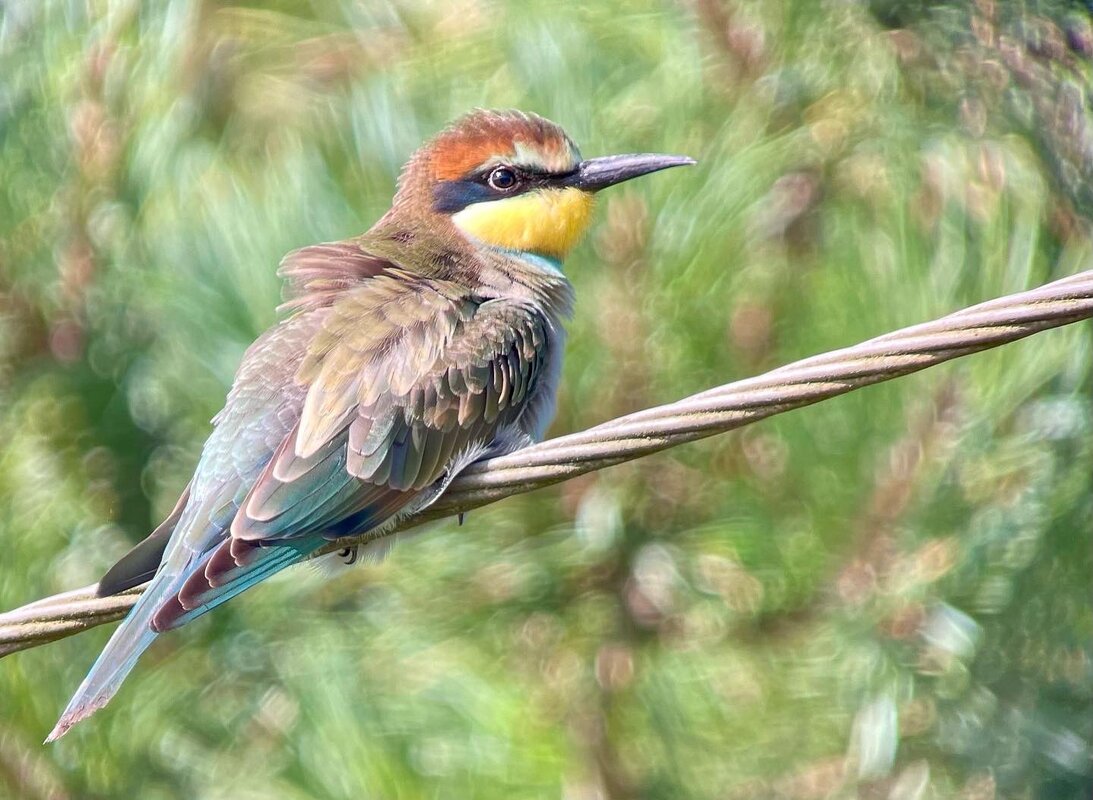|
Birdwatchers in Norfolk are celebrating successful nesting by two families of Bee-eaters this summer. A small flock of the brightly-coloured birds were spotted around a former sand quarry in June, and the RSPB and North East Norfolk Bird Club were quick to ensure the nests were protected while giving people the opportunity to visit without disturbing the birds. Thanks to a webcam, people across the country were able to watch the adults entering the nest tunnels with flying insects for the stripy-headed chicks. Last week, the five youngsters left the two nests for the final time and have migrated south to equatorial Africa.
This bird was once strictly Mediterranean, but climate change is causing Bee-eaters to spread north and it’s becoming scarcer in the south. Having nested in Britain only once prior to 2002, the number of breeding attempts is already in double figures durng the last 20 years. In Germany, the breeding population has increased from one pair in 1990 to 2,500 pairs! Bee-eaters have yet to nest in Wales, but are occurring more frequently: there were more records during 2000-19 than in the whole period since records were kept several centuries ago. Rare sightings in North Wales recently include Dotterels on the summit of Foel Grach and the Great Orme, Cattle Egret at RSPB Cors Ddyga, and several Balearic Shearwaters off Anglesey. Curlew Sandpipers have been at Llanfairfechan and on Malltraeth Cob pool, where a Garganey was seen at the weekend. Three more Garganeys were on Cefni reservoir, along with four Green Sandpipers, and an impressive 26 Greenshanks were at Aber Ogwen. A Hen Harrier flew from Pen Llŷn to Bardsey on Monday and four Black Terns were at Dinas Dinlle on Friday. Bird flu continues to kill thousands of Gannets in Pembrokeshire, with several washed up dead around the North Wales coast. Bird flu is also suspected on the Dee estuary. The Welsh Ornithological Society has opened bookings for its first in-person Conference since 2019. Excellent talks have been arranged on the theme of ‘After Dark’ for the event at Aberystwyth University on 5 November. WOS is also reminding photographers that its annual competition is open until 31 December, with the winners to be chosen by tv wildlife presenter, Iolo Williams. The delayed Northeast Wales Bird Report, covering 2019 and 2020, has been published recently, and can be downloaded free of charge from the Bird Recording North Wales website.
0 Comments
Leave a Reply. |
Bird notesA weekly update of bird sightings and news from North Wales, published in The Daily Post every Thursday. Archives
July 2024
Categories |

 RSS Feed
RSS Feed
